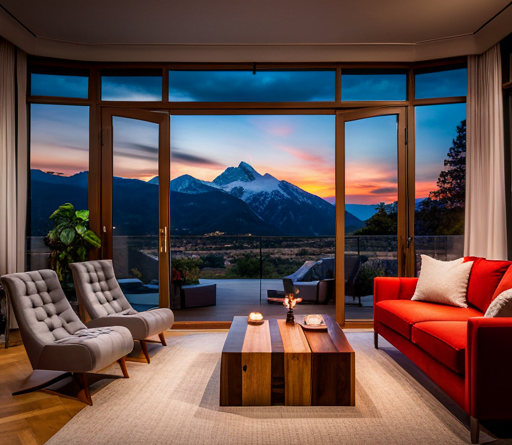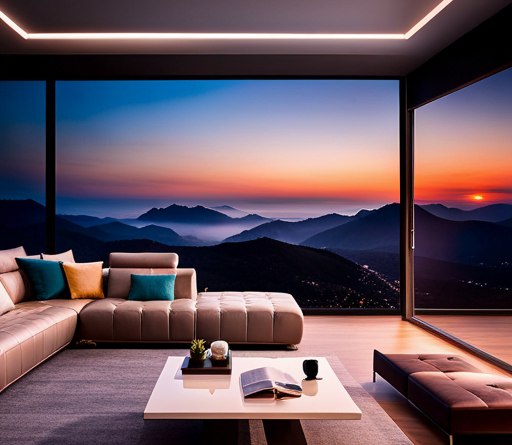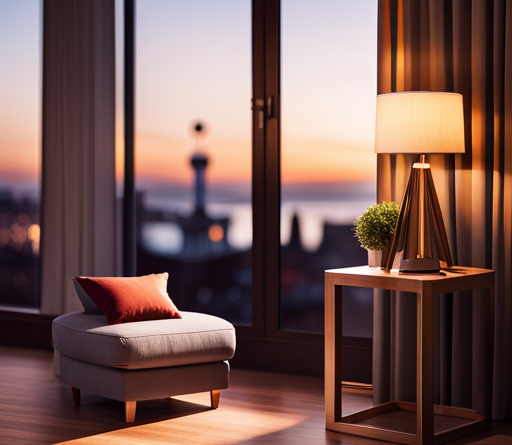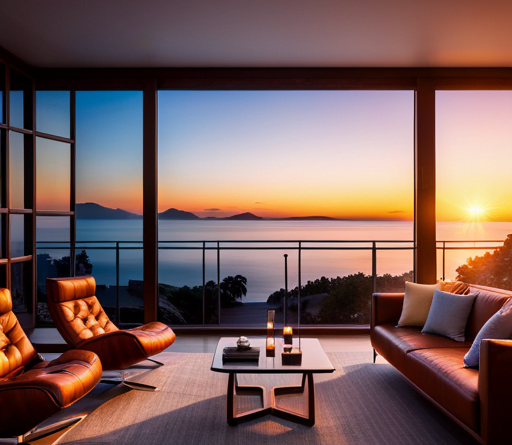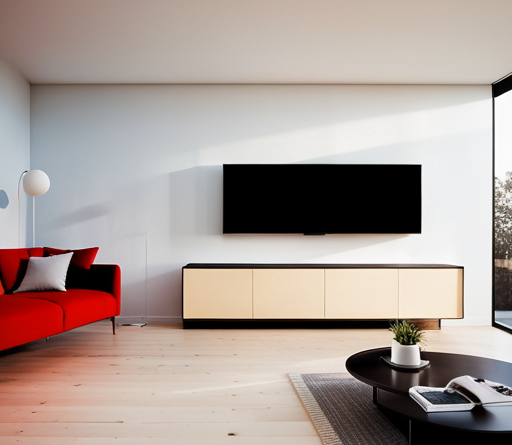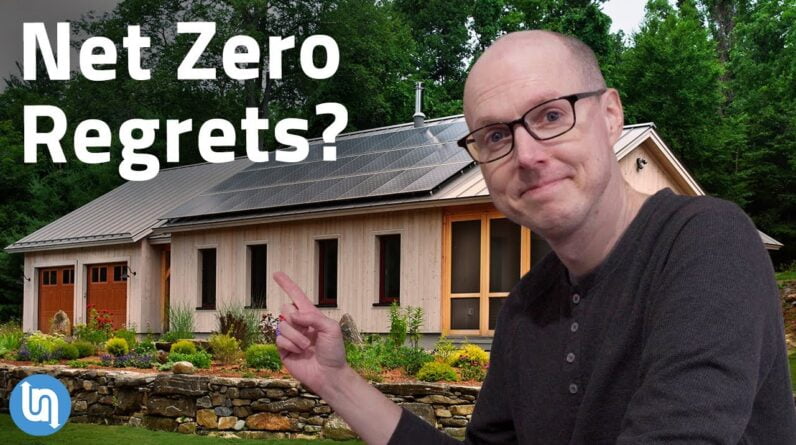
This video is brought to you by Icogni.
There are a lot of different paths you can take to get to a net-zero home. Everything
from passive homes to earthships to modular and factory built houses. You can retrofit an existing
building or you can build a new one. All of the options can make your head spin and there are
pros and cons to each of them. In my case, I’m building a new, factory built net zero
home, which has been in the planning stages for a while now, but is scheduled to start
construction very soon. I thought it would be interesting to share what I’m doing and
why my wife and I chose the path we did. So let’s see how we came to our decision
… and if I have any regrets so far. Before I get into exactly what
I’m doing for my new house, there’s a little context I think is important.
One of the reasons I named my channel, Undecided, was because I have a lot of different interests.
I’m very curious and like to learn new things and try to keep an open mind.
It goes back to when
I was a freshman in college and hadn’t declared a major yet. At my college if someone asked
what your major was in that case, you’d answer, “I’m undecided.” If you’ve been watching
my videos for a while, you may have noticed that I go through waves of topics. Starting a
couple of years ago I began publishing videos on different net zero and sustainable home
building techniques.
That was me following different threads I found interesting and concepts
many of you were sharing with me. As I learned and shared what I was finding, I got motivated to do
some of those building techniques on my own home. I see two main motivations for wanting a super
energy efficient home. One of which shouldn’t be surprising if you’re concerned about the
environment. In the US in 2020, carbon emissions from the residential sector equated to about 6.1%
of total greenhouse gas emissions. The European Union and U.K.’s residential sector had a greater
share compared to the U.S. at about 12%. Although the shares don't look that relevant compared to
the emissions from other sectors, the amount of CO2 emitted in both regions went above 360
million metric tons of carbon dioxide. The other big motivator for high efficiency
homes is saving energy and ultimately, money (at least in the long run).
These reasons
aren’t mutually exclusive, and you most likely have one or both of those motivations if
you’re considering going net zero. For me, I’m interested in both of those points … and
I want to be financially responsible in going net zero. Of all the concepts I’ve covered,
like retrofits, passive house standards, earthships, and modular and factory built
homes, there are two that jumped out at me when we started thinking about a new home:
that’s passive house and factory built homes. Just for a quick recap, comparing a
passive house to a standard built home: the passive house can save up to 90% of the energy
used for heating and cooling without cutting back on comfort.
You can check out my Passive
House video if you want to get all the details, but in short, there are very specific and
rigorous benchmarks you have to hit on space heating, electricity consumption,
air tightness, and more. For instance, on air tightness you can’t exceed 0.6
air changes per hour at 50 pascals of pressure. For a point of comparison, a typical
house might have 3 – 6 air changes per hour. While I’m interested in passive houses, I wasn’t
completely on board with all the hoops you have to jump through for official certification. The
primary advantage of certification is strict quality control. The first and most crucial
step to getting this accreditation is finding a competent Certified Passive House Designer
or Consultant and incorporating them into your process as early in the design sequence as you
can. Then, with the help of your contractor, you'll decide which certification you
want to get — in the U.S., for example, there's two certification bodies: the Passive
House Institute (PHI) and the Passive House Institute US (PHIUS).
Yeah, that’s not confusing
at all. Basically, it’s two groups that disagree on the “right” way to build a passive
house. In general one isn’t necessarily easier to get than the other one, but PHIUS is
considered a little more adaptable than PHI. With the certification goal defined, it's
time to run a detailed digital simulation of the building’s performance — this is called an
Energy Model. It will help to define aspects like window glazing, shading, construction type,
ventilation, and more by providing details on heat and airflow, moisture, noise, light,
etc. And the model is constantly updated as the design team identifies changes that are needed
based on the realities of the construction site.
After the home is built on the final site, the
construction will be subjected to the ‘Blower Door’ air tightness test, which uses a fan to
pressurize and depressurize the building while sensors are used to measure the quantity of air
leakage through the house’s envelope. If your home does well in the test, there are documents
to be submitted to get your house certified. I’m not against any of that, but this is where
going the modular or factory built route comes in. Before I get to why I went
with the modular approach, I’d like to thank today’s sponsor, Icogni. It wasn’t that long ago that I signed up for
a newsletter from a company, I won’t name who, but after I did I saw a major increase in the
number of promotional emails I was receiving from companies I’ve never heard of.
And
that’s because they sold my information to a databroker. I’ve also had my information
leaked through data breaches, like the one from Target a few years ago which can end up in the
same places. I’m sure you’ve experienced it too. Incogi can help with this. We have the right to
request that data brokers delete our information, but it takes a lot of time and effort. I
signed up for Icogni, gave them the legal right to work on my behalf, and then … just
sat back and relaxed. You’ll see updates on your account for which data brokers they’ve
sent legal requests too and which ones have complied. It couldn’t be easier. I’ve been letting
Incogi stay on top of this for me for months now. If you want to take back some of the control
around who has access to your personal information, give Icogni a try. The first 100
people to use code UNDECIDED at the link below will get 20% off of Incogni.
Thanks to Icogni
and to all of you for supporting the channel. Now back to why I went the modular/factory
built approach. I’m sidestepping a lot of the certification craziness because I’m
working with a company that’s hitting many of the passive house standard’s benefits,
but without the need to strictly follow the standard. For me the most important criteria
was reducing thermal bridging in the structure, having ample insulation to hit extremely
high R-values for the walls, roof, windows, and foundation, as well as being
airtight to control air leakage.
I’ll be going much more in-depth on the actual
construction process in a future video, but I’m working with the company Unity Homes,
which is a sister company of Bensonwood Homes. They have a modular approach to their
house design to reduce the amount of custom design and engineering required for
each project. Basically, they’ve already taken care of all of those pre-planning,
engineering, and modeling steps. Also, building the walls and structure in a climate
controlled factory setting speeds up construction and reduces waste. I’m still working out the
details with Unity, but I should have videos coming up showing the entire process within the
factory, as well as the construction on site. The reason I’m not too concerned about getting
official passive house certification is because of Unity’s track record and design.
They’re
houses achieve near passive house level results. I’m going to be doing the door blower test on
the house immediately after onsite assembly and later on in the finishing stages to make sure I’m
hitting an ACH below 1 … ideally 0.6 or below. That brings me to the HVAC system
I’m going to be getting installed, which will be a WaterFurance geothermal
setup with a desuperheater to produce hot water. A desuperheater basically
strips away a small amount of heat from the geothermal system to help produce the
hot water in a very energy efficient way. Some of the benefits for striving for a
passive home are that they have cleaner and fresher air since the air intake and exhaust
are tightly controlled with an energy recovery ventilator (ERV), which my house will also have.
It exchanges fresh outside air with stale inside air and recovers the heat in the process.

It’s a
little strange, but I’m probably the most excited about the ERV setup in my house. I suffer from
pretty bad seasonal allergies and with systems like this and extremely airtight houses, it
can provide some excellent allergy relief. Okay, I may have lied. I’m actually as excited
about hitting net-zero as I am about indoor air quality. Net zero is when a house generates as
much energy as it uses over the course of a year, which means solar panels and, in my case,
a battery system.
I’m still hashing out the exact details of the system, but it will most
likely be a 15-18 kW solar panel array with 15-20 kWh of battery storage. It’s a little difficult
trying to model our energy requirements before we’re actually living in the house to see what we
need, but it may be the type of thing where we add onto the existing system a year or two down the
road if we’re falling short on our net-zero goal. And for homeowners interested in getting
solar, Energysage is great and you should use it (I'll put a link to my Energysage
portal below), but I’m actually working on my own complementary project that will be
launching soon (not exactly sure when yet), but it’s meant to help demystify getting solar
for your home and answer a lot of questions. The goal is to pass along what I’ve learned
over the years so you feel confident in your decisions on getting solar and achieving
your goals.
If you’re interested in being part of the beta launch group, you can join
the waitlist at the link in the description. And for long time followers of the channel,
it won’t be a surprise to hear this, but I’m going to be building out a pretty extensive
smart home. I have plans for smart shades and blinds to help control how much sunlight and
heat comes into the house at different times of the day and year. Smart controls for the
HVAC system and lights, a smart electric panel, as well as a pretty extensive home network
and security camera setup. I’m a big believer in smart homes and how the internet of things
can benefit a home’s energy efficiency. Again, I’ll have more videos coming down the
line on what exactly I’m doing there. But will all of this be worth it? Obviously, the
jury is still very much out on my specific build, but passive homes, and energy efficient homes
in general, can provide a lot of value.
It can vary greatly depending on where you'll be
building your passive home. For example, in Salem, Oregon in 2010 a new 1,885 sqft² (175
m²) passive house project had a building cost of $159/sqft² ($1,711/m²) — about $300,000 in
total — while the average price per sqft² in the U.S. at that time was $84/sqft² and a single
family home in Oregon at that time cost about $250,000. Even though their passive home
cost about 16% more than a conventional home, the energy savings for just heating
was estimated at $800 per year. All of this is highly dependent on
where you live and are building. It’s not that different from getting solar
panels for your home. In that case you’re basically prepaying for your electricity
for the next 20-30 years. While it’s a little pricey up front, you’ve locked
in your costs and will benefit from that over time. A passive house is the same
thing. I’ll be paying more up front, but will benefit from the energy savings of the
house over time. How much is the big question, especially because we’re building at probably
the worst possible time.
The prices of building materials and labor have increased
dramatically over the past couple of years. While building new was the right fit for my
wife and I, it’s not a requirement to get a passive or net zero home. There are
also certifications for retrofitting old construction that you can try and get.
Since it's not always practical to renovate old buildings to the Passivhaus Standard,
the Passivhaus Institute created EnerPHit, which performs an analysis of
Passivhaus components for retrofits.  Like a brand new passive home, a retrofit house
offers high energy efficiency, thermal comfort, and healthy air circulation. In addition, older
buildings offer more possibilities for energy savings and corresponding reductions in CO2
emissions because they use more energy than the typical new build. Some EnerPHit reports show
a 93% reduction in energy loss for retrofits. But, there are also challenges in Passive House
refurbishment, such as conservation and external insulation issues, as well as space limitations
for both internal insulation and ventilation systems. You don’t always know what you’ll find
on any home retrofit until construction starts, so costs can easily balloon.
It’s one of
the reasons we opted to build new instead. However, a good friend of mine is going the
retrofit approach on his house. It’s going to be fun to see how both of our projects compare as
we progress. If you haven’t seen what Ricky Roy is up to on the TwoBitDavinci YouTube channel,
here’s a quick rundown of what he’s doing. Hey, Matt.
What's up Undecided viewers? I'm
Ricky with Two Bit da Vinci, and like Matt, I'm also working on a net zero house, but unlike
Matt, I've decided to retrofit an older house. And the main reason for this is because where
we live, there weren't that many open available lots. And for school districts and stuff, we
were kind of forced having young kids to pick a place around here. So this is the best that
we came up with. Now we're going to have some challenges that Matt will not. For example,
the house is very poorly insulated, so we'll have to rip out all the drywall, get behind the
studs and check out the piping, the plumbing, electrical, and definitely insulate
the house better.
Being in San Diego, most homes back in that era just weren't
insulated very well. The weather here is not as bad as Matt has to face, and so as
a result, they kind of skimped out on that. Another problem is our roof needs to be replaced
in the next three to five years. And so, as a result, we can't put solar panels on
there. Instead, we're going to go with a ground mount system off in the corner. So we'll
make videos about that. But the big difference, I think, between the two of us is going to
be logistics, because we're going to have to plan when to do these projects and find
a way to do it without losing our minds, because we're going to be living here while we
do it.
Matt and I will also be covering some of the same technologies like geothermal
HVAC systems, for example, and for him, he'll know exactly where it'll be and placed.
And for us, we'll have to figure out where to do it and what to do about it. So depending on
what kind of a viewer you are and what kind of house do you have, you'll probably learn a
lot from both of us, so definitely subscribe and stay tuned for both channels. And we'll
have a ton of content coming in the near term. I’m pretty excited to see how his house turns out. Be sure to follow both of our projects
because it should be a fun comparison.
So … do I have any regrets so far? Only one: the
timing. My wife and I are building our dream home and are settling in for the long term, which
is why we’re willing to go a little above and beyond on the upfront costs for the long term
benefits. This house should be low maintenance, low operational costs, and be more
comfortable and healthy than any house we’ve lived in before. But again … the timing.
Between the pandemic and inflationary pricing, it’s jacked costs up much higher than we
originally expected, but those costs are across the board no matter what you’re doing right
now. Should we have waited? I don’t think so. If anything, we probably should have started this
project sooner than we did. That’s my regret, but I’m really excited to see how this
turns out and to share it with all of you. So what do you think? Are you still
undecided? Would you want to build new or go with a retrofit? Jump into the comments
and let me know and be sure to check out my follow up podcast Still TBD where we’ll be
discussing some of your feedback.
And don’t forget to check out Icogni if you want to take
back some control of your privacy … the link is in the description. If you liked this video,
be sure to check out one of these videos over here. And thanks to all of my patrons for
your continued support and welcome to new producer Sahb Kumar. And thanks to all of you
for watching. I’ll see you in the next one..
As an Amazon Associate I earn from qualifying purchases.


